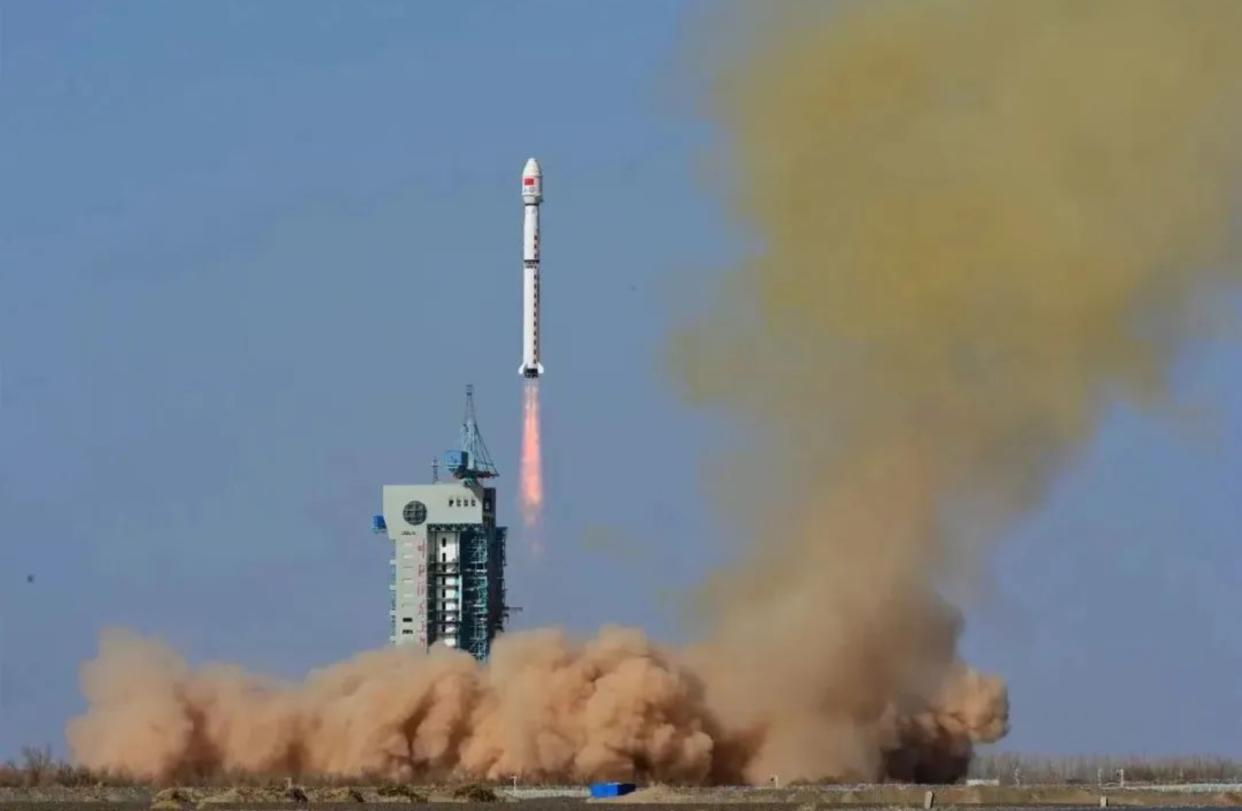China launches new weather satellite after airspace closure issue with Taiwan (video)

China has launched a new meteorological satellite to boost rainfall monitoring.
A Long March 4B rocket lifted off from Jiuquan Satellite Launch Center at 9:36 p.m. EDT on Saturday (April 15; 0136 GMT, or 9:36 a.m. Beijing time on April 16). Insulation tiles fell away from the rocket as it climbed into clear skies above the spaceport in the Gobi Desert.
The satellite was later cataloged by U.S. Space Force domain tracking in a near-circular orbit with an altitude of roughly 255 miles (410 kilometers) and inclined by 50 degrees.
Related: The latest news about China's space program

The Fengyun 3G satellite will provide data for weather forecasting and high-precision rainfall monitoring, disaster prevention and mitigation, climate change response and ecological conservation, according to Chinese state media outlet Xinhua.
The flight path of the Long March 4B, from northwest China, saw rocket stage drop zones both over inland China and in seas north of Taiwan. The latter was the source of a dispute, with Taiwan claiming an area of airspace would be closed for three days due to China's launch, Reuters reported. The airspace closure was later apparently revised to last a matter of minutes covering the period around the planned launch.
Related stories:
— Chinese launch company tests vertical rocket landings with jet-powered prototype (video)
— China's Space Pioneer reaches orbit with Tianlong-2 rocket launch (video)
— China wants to launch over 200 spacecraft in 2023
The issue was reported by some outlets as a "no-fly zone," which refers to establishing military control over an area of airspace. The closure was a notice of navigational safety matters, commonly issued by countries when conducting orbital launches and indicating areas in which rocket stages will fall once expended.
Tensions between the two nations were already high, with China last week conducting military drills around Taiwan.
The mission was China's 17th orbital launch of the year. The country plans to launch at least 200 spacecraft on more than 60 launches across 2023.
Follow us on Twitter @Spacedotcom or on Facebook.

